The itinerary of Rome, discovering the beautiful and good of Italy
Rome is a city of unique and overwhelming charm. Walking through its streets you are immersed in thousands of years of history.
At every step you walk through thousands of years of human history, including battles, declines and rebirths, which led to new movements never seen before. You breathe art and beauty in every statue, every painting, every building and every perspective.
If history and art are the masters, good food is no less. So our tour can only pass from the taste, through the classics of Roman cuisine, which like its City is blunt and tasty!
What to visit in Rome
Chiostro del Bramante and via dei Coronari
In the V Ponte district, you will find the Chiostro del Bramante. It is an extraordinary work of the Renaissance period that is part of the Church of Santa Maria della Pace and contains the fresco of the Sibyls by Raphael.
Via dei Coronari has become famous for its appearances in several films. For a long time pilgrims traveling to St. Peter’s Basilica have been buying sacred objects, especially rosary beads, on this street. Hence the name of the street.
Spada Gallery
The Spada Gallery is a masterful work of Borromini’s perspective game, which creates an amazing optical illusion. The columns that shrink, the floor that rises and the planes of the colonnade that converge towards a single vanishing point, create the illusion of a Gallery 35 meters long.
In reality, the Gallery measures only 8.5 meters. Even the statue placed in the garden at the end of the colonnade seems much bigger than it really is.
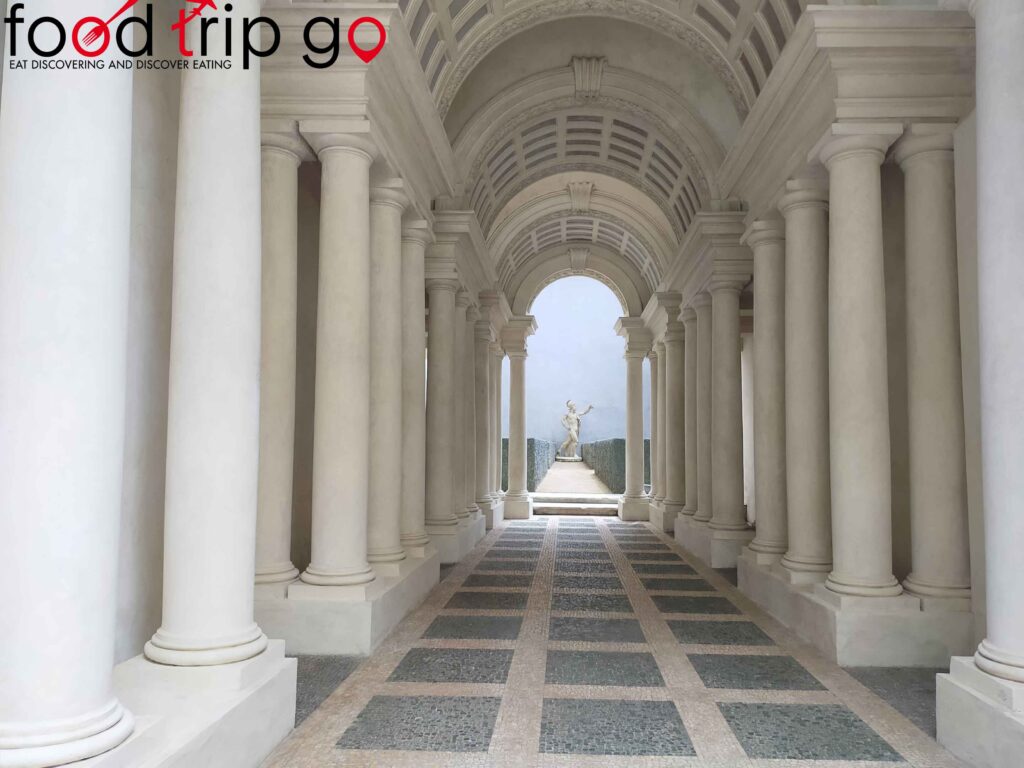
Navona Square
Piazza Navona in ancient times was the stadium of Domitian, then renovated by the Pamphili family in monumental style. Inside there is the Fountain of the Four Rivers by Bernini to represent the 4 corners of the earth: Danube, Ganges, Rio de la Plata and Nile. The statues are surmounted by the imposing agonal obelisk, coming from the Circus of Maxentius, which is located on the Via Appia.
The square is overlooked by Palazzo Pamphili, an imposing building that represented the power and prestige of the homonymous family. In Piazza Navona you can also admire the Fountain of Neptune and the Fountain of the Moor. Piazza Navona hosts a local market that has become a tradition. It is interesting to remember that once the market was suspended in the hottest months and the square flooded to give coolness to the citizens.
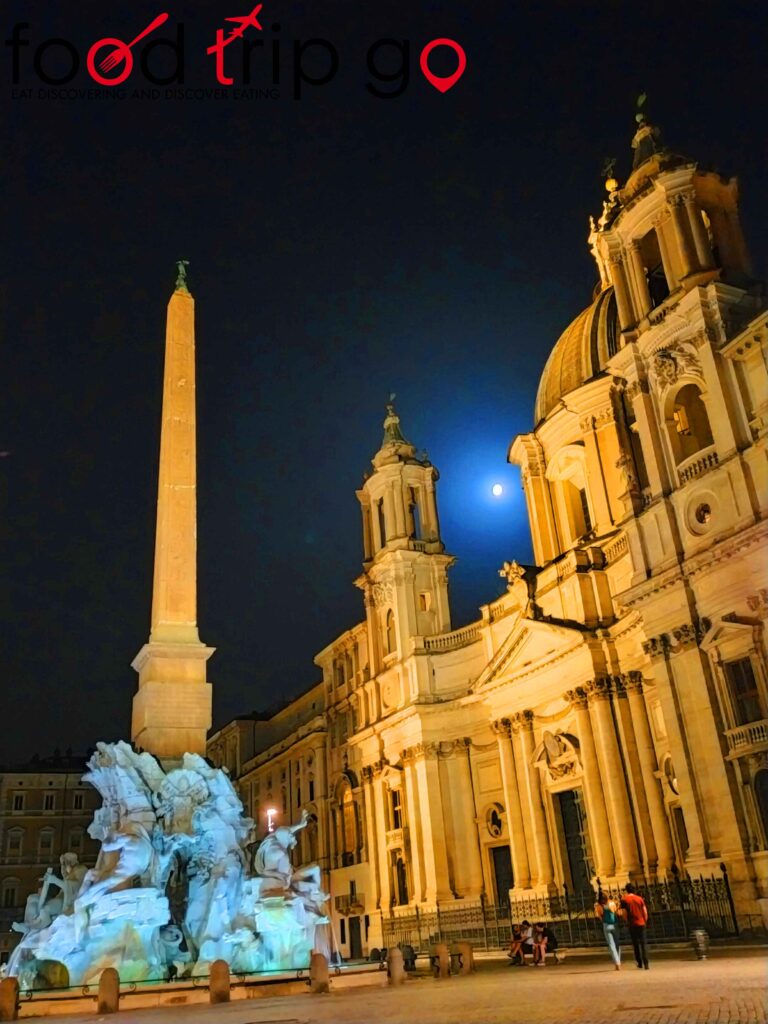
Church of San Luigi dei Francesi and Pantheon
The church of San Luigi dei Francesi is located not far from Piazza Navona and is undoubtedly a recognition of France, starting with the statue of Charlemagne on its facade. Inside there are three works by Caravaggio about St. Matthew: the martyrdom, the vocation and St. Matthew and the angel.
The Pantheon is probably the most mystical building in Rome, a temple dedicated to all the divinities past, present and future. It dates back to the second century AD and has a circular structure with Corinthian columns with an oculus in the upper center for internal lighting.
It was converted into a Christian basilica in the 7th century, which allowed it to survive until the present day. Inside we can find the tomb of Raffaello Sanzio and Vittorio Emanuele II of Savoy.
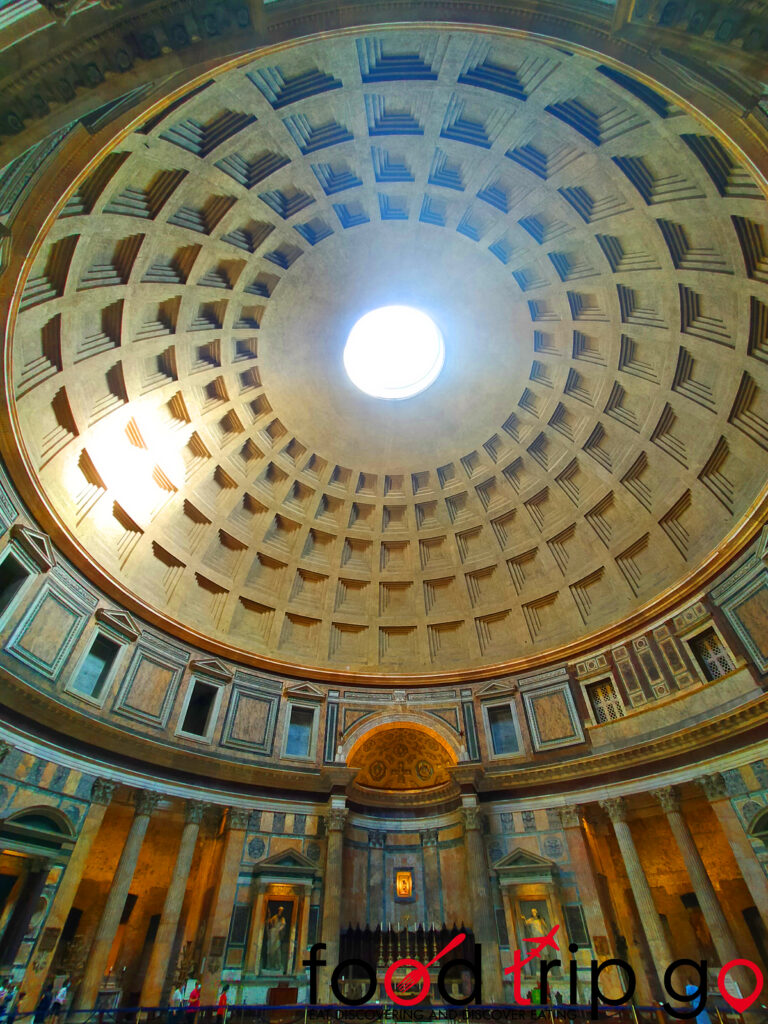
Hadrian’s Temple and Bernini’s Elephantine
The Temple of Hadrian is a Roman temple built in the Campus Martius. Of it you can see only a few columns that have been incorporated into more modern buildings.
The Obelisk of Minerva is located in the square of the Basilica of Santa Maria sopra Minerva and is one of the nine Egyptian obelisks present in Rome. It is placed on the back of a marble elephant sculpted to a design by Bernini.
Saint Ignatius of Loyola Church
Not far from the obelisk of Minerva, stands Saint Ignatius of Loyola, in baroque style. The uniqueness of its interior is the dome that could not be built due to lack of money.
This led the genius of the painter Andrea del Pozzo to a spectacular solution: he painted the dome with a game of perspectives that still leaves you breathless for its perfection. Entering the church, you do not perceive the lack of the dome and you have to get closer to the altar to understand that in fact that skylight on the dome is nothing more than a drawing.
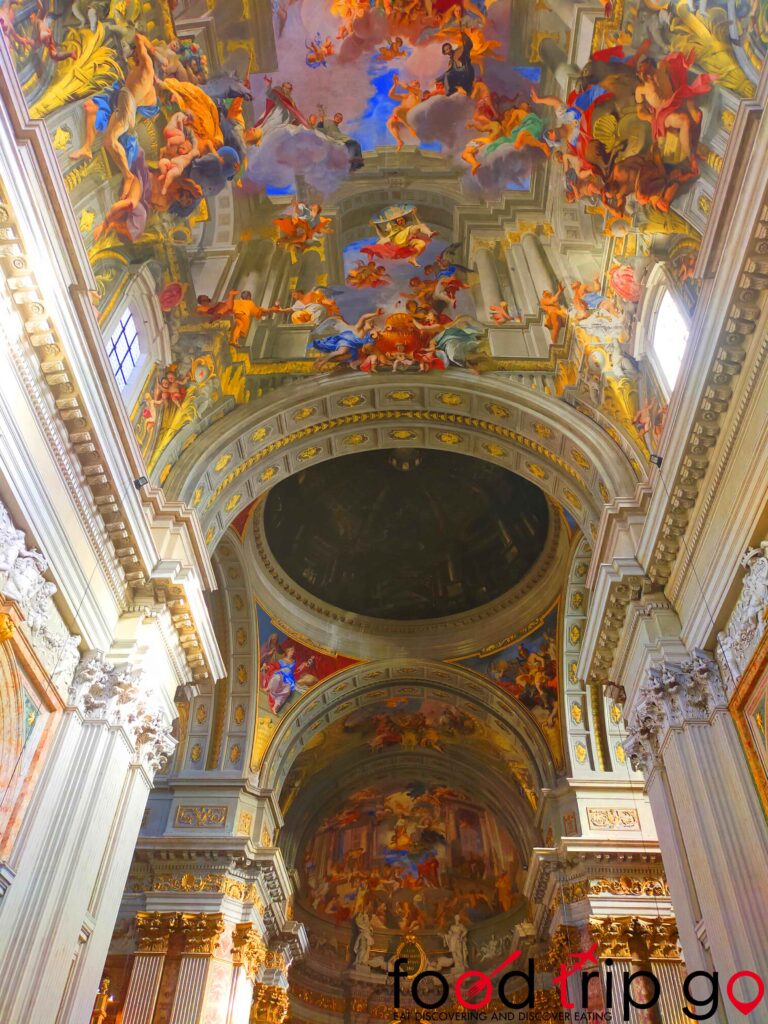
St. Paul’s within the Walls and Basilica of St. Mary of the Angels and Martyrs
San Paolo entro le mura is an Anglican church in neo-Romanesque style, with a red brick facade. The Basilica of Santa Maria degli Angeli e dei Martiri is where the official ceremonies of the Italian Republic are held. It originated from the Baths of Diocletian by Michelangelo Buonarroti.
Trevi Fountain
The Trevi Fountain is one of Rome’s most famous monuments in the world. The artistic theme is the sea, with the statue of the god Ocean on a shell pulled by two winged horses.
It is entered now in the collective Italian imagination for the famous scene in the film La Dolce Vita by Fellini in which Anita Ekberg, entered the fountain, invites Marcello to follow her. It is tradition that you throw a coin into the fountain behind your back with your eyes closed, to propitiate a return to the beautiful Italian capital.
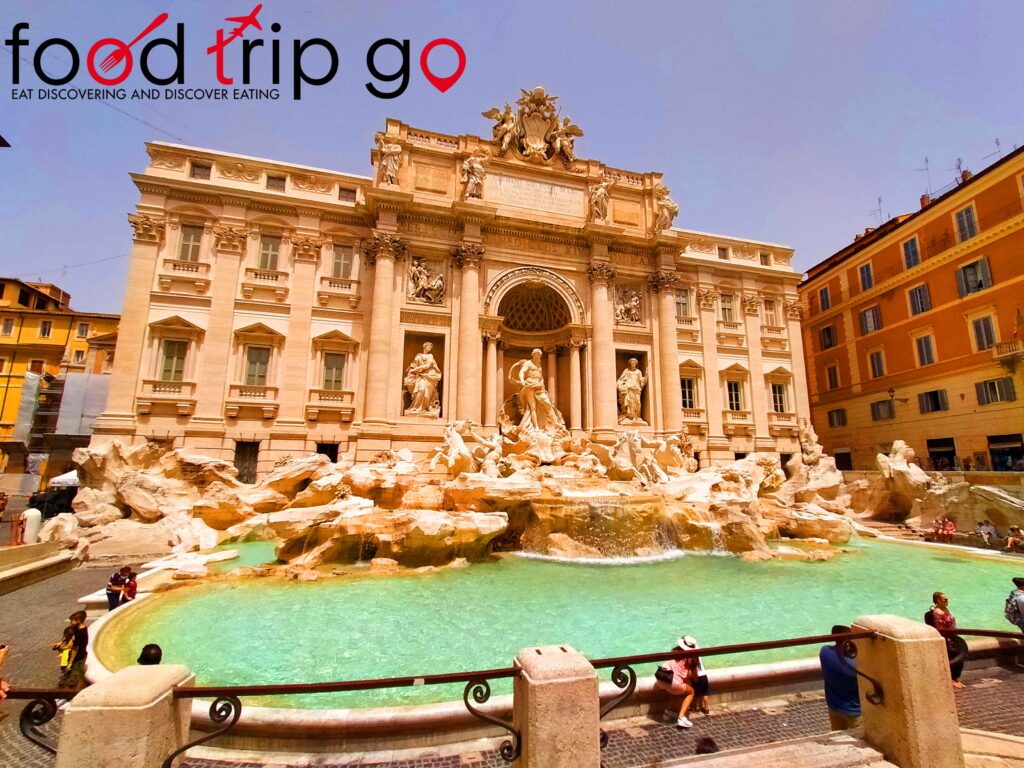
Doria Pamphilj Palace, Column Palace and Barberini Mithraeum
Rome is full of impressive and artistic palaces. Palazzo Doria Pamphilj contains the gallery of mirrors. Palazzo Colonna has deep baroque influences and preserves the painting of Mangiafagioli, by Annibale Carracci. During the battle between the troops of Napoleon III and the Roman Republic a cannon ball was stuck in one of the steps and it has remained ever since.
Inside Palazzo Barberini is the homonymous Mitreo, one of the best preserved in Rome. Very interesting and out of the canonical itineraries also the Mitreo of San Clemente.
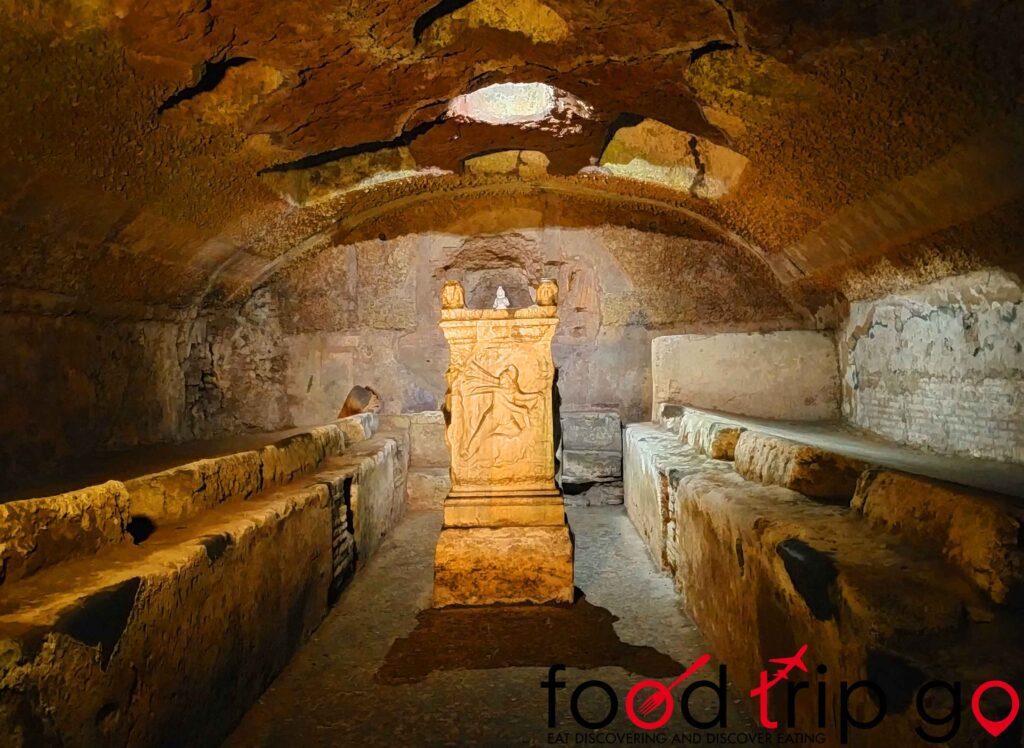
Quirinale Palace, the Domus Romane of Palazzo Valentini and the Trajan’s Column
Palazzo del Quirinale is the residence of the President of the Italian Republic and contains 1200 rooms. Under Palazzo Valentini ancient Roman domus have been discovered, enriched by mosaics, decorated walls and polychrome floors.
Opposite is the Trajan Column, erected for the conquest of Dacia in the second century AD. The spiral friezes tell of the battles that took place, in memory of Emperor Trajan.
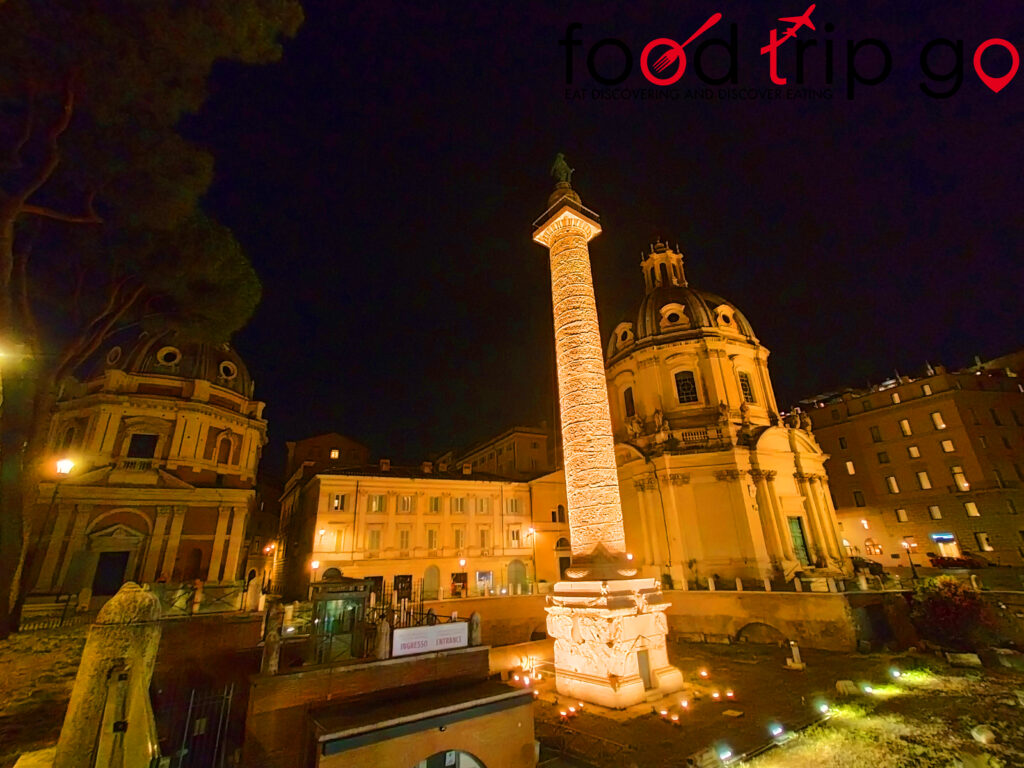
Altar of the Fatherland and Piazza del Campidoglio
The Altare della Patria, a monument also called Vittoriano in honor of Vittorio Emanuele II of Savoy, is one of the highest symbols of the unification of Italy. Here lies the tomb of the Unknown Soldier. It is based on Renaissance art and represents a modern forum. The imposing, majestic and elegant structure combines ancient and modern Rome.
Nearby is Piazza del Campidoglio, located on top of the hill of the same name and the seat of Rome’s City Hall. The current structure of the square is as designed by Michelangelo Buonarroti, who wanted to place the statue of Marcus Aurelius in the center.
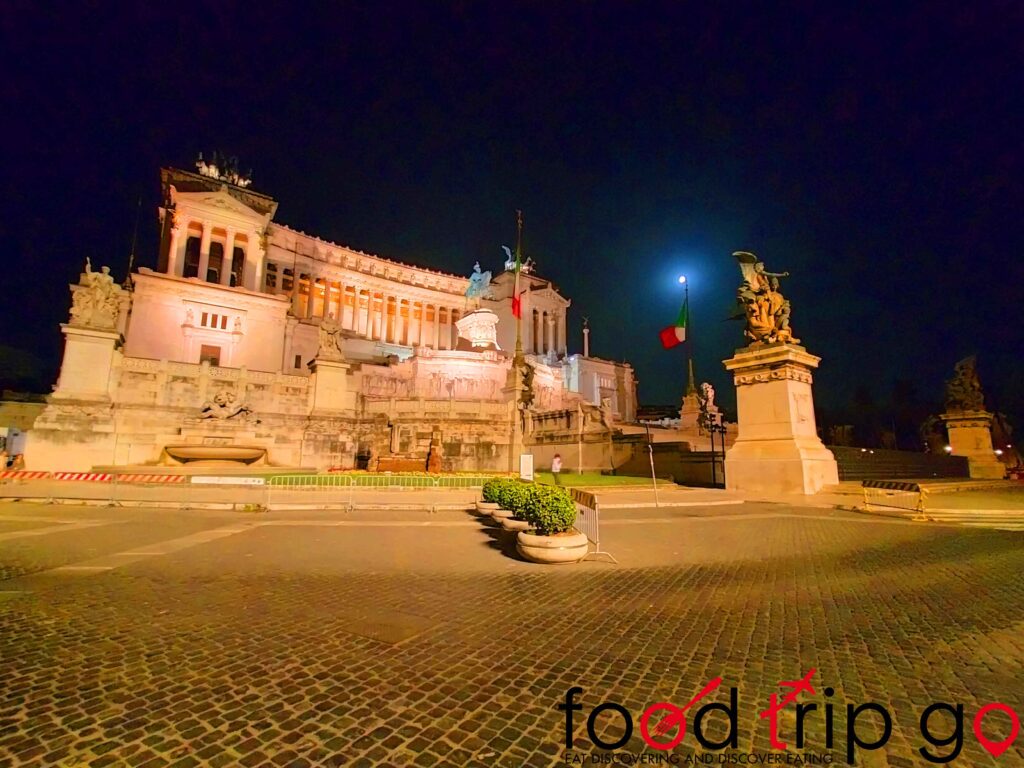
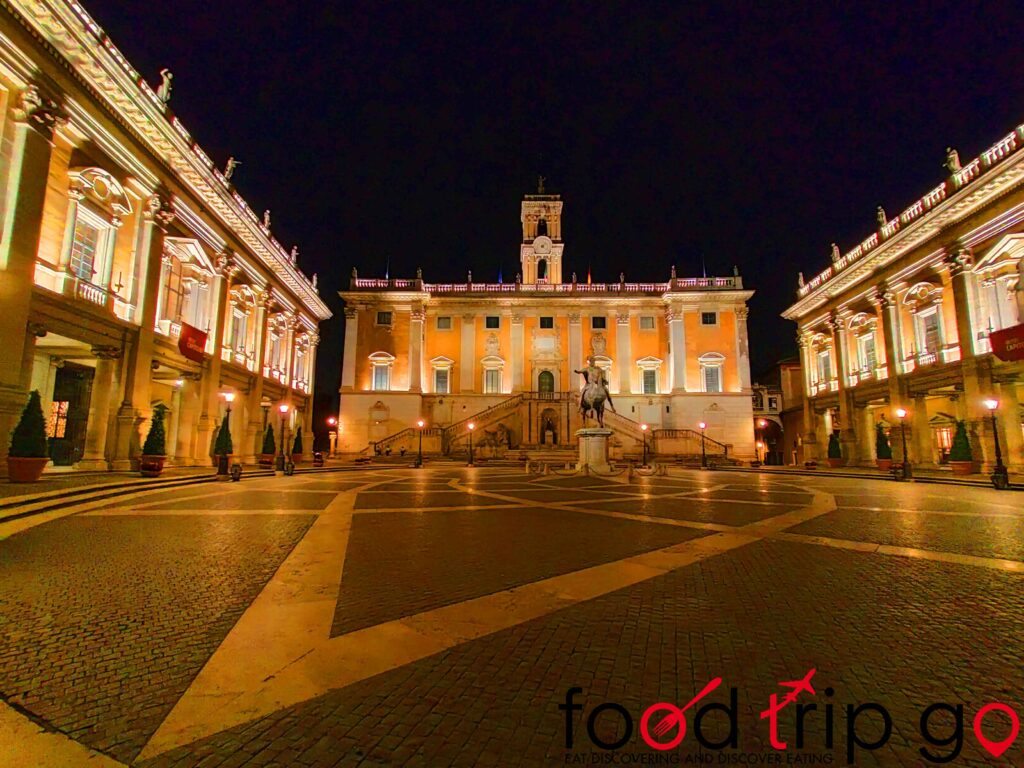
Domus aurea, Colosseum and Arch of Constantine
The Domus Aurea was built at the behest of Nero after the great fire of Rome and was to be a villa of great magnificence. It was rediscovered in a fortuitous way during the Renaissance and great artists such as Michelangelo and Pinturicchio drew influence from the grotesque style of the frescoes of the villa.
The Flavian Amphitheatre, more commonly known as the Colosseum because of its impressive size, is the largest in the world and could hold up to almost 90000 spectators. Here were held shows and reconstructions of battles with gladiators and animals. It is definitely the symbolic place of the city of Rome, for almost 2000 years.
Part of the Colosseum is the Arch of Constantine, erected to celebrate the triumph against Maxentius.
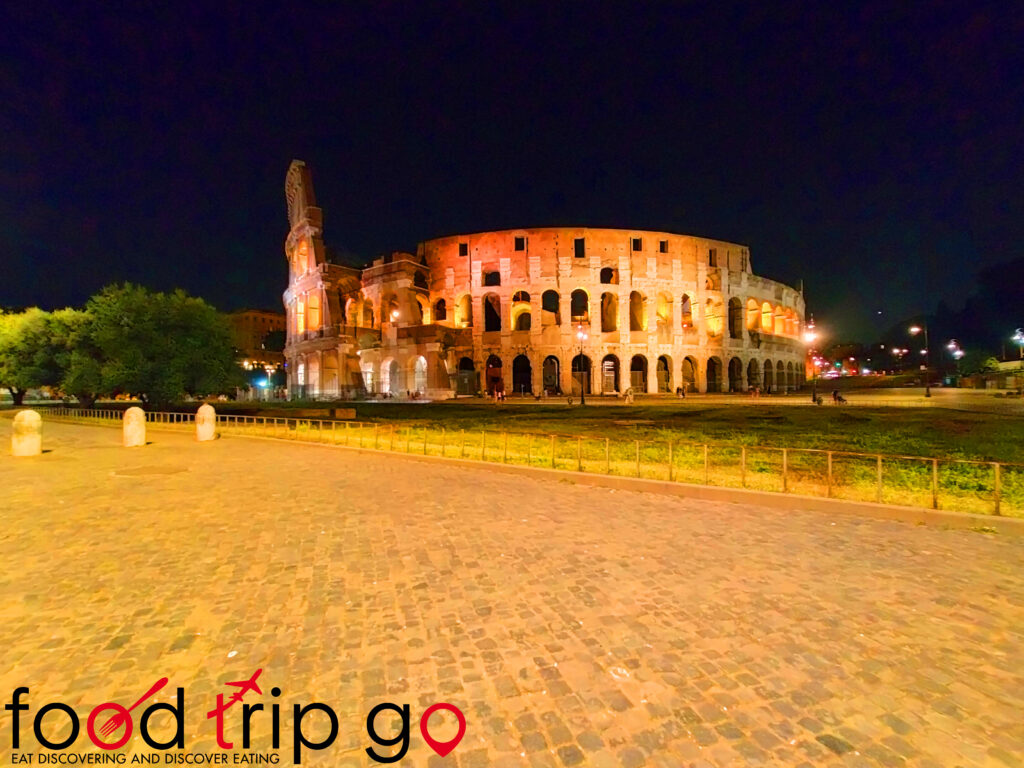
Palatine Hill, Roman Forum and Mouth of Truth
The Palatine Hill is where, according to legend, Rome was founded. Here in fact is where Romulus and Remus were saved by the She-wolf and where the City was founded. It was the ideal place to observe the Tiber River flowing and surrounded by swamps.
The Roman Forum is the central place of every Roman city, where there were the main public buildings and the market. It is located at the intersection of the two main roads, the cardinal and the decumanus.
The Mouth of Truth is a stone mask that in Roman times had the function of a manhole cover. Several legends have revolved around it, attributing to it the ability to act as an oracle or to punish lies by cutting the hand inserted in the mouth of the mask.
Basilica of San Clemente al Laterano, Archbasilica of San Giovanni in Laterano and Basilica of Santa Maria Maggiore
Rome is also known for its many churches, rich in art. The Basilica of San Clemente al Laterano hides in the basement an ancient and well-preserved Mithraeum. It is a very suggestive place, out of the classic tours of the City.
The Archbasilica of San Giovanni in Laterano is the oldest Basilica in the West, dating back to the fourth century AD and it is the residence of the Holy See. The Basilica of Santa Maria Maggiore is characteristic for its mosaics that enrich and color it.
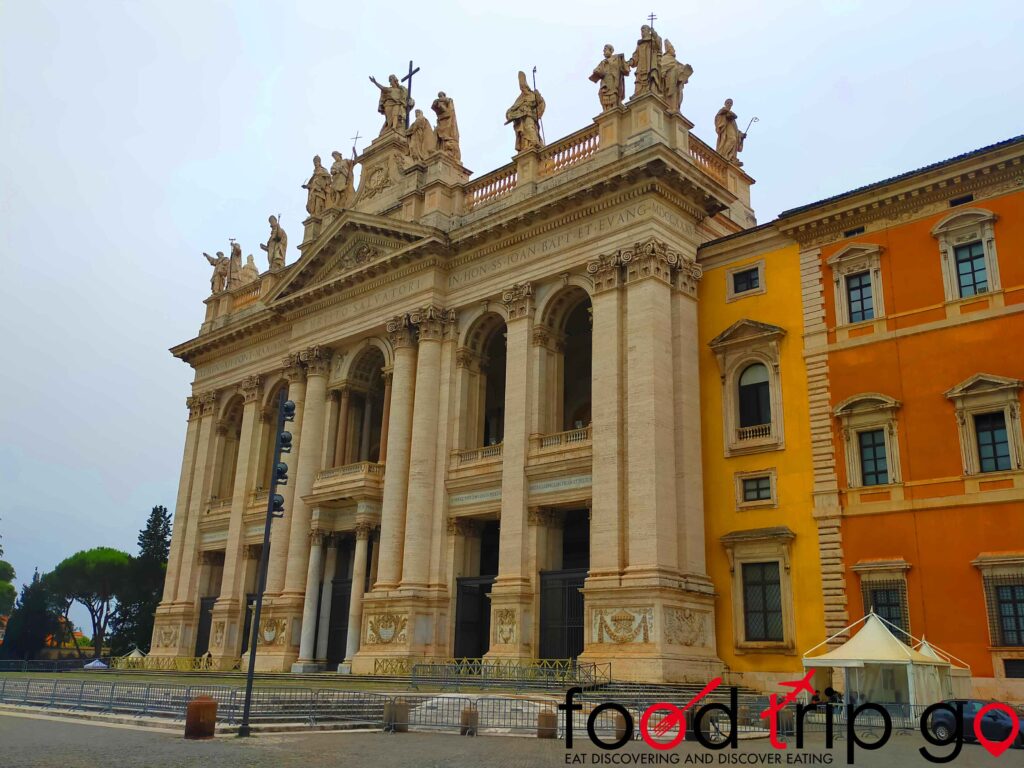
Spanish Steps, Spanish Steps, Museum and Crypt of the Capuchin Friars and Ecstasy of St. Teresa
Piazza di Spagna, with the Spanish Steps behind it, is one of the most famous squares in Rome. The name comes from the palace where the Spanish embassy was located. At its center is the Fontana della Barcaccia, the work of Bernini, father and son.
The Crypt of the Capuchin Friars is located under the church of Santa Maria della Concezione and contains the skeletal remains of nearly 4,000 bodies buried by the order. The Ecstasy of Saint Theresa is a marble sculpture by Bernini that is located in the Cornaro Chapel at the church of Santa Maria della Vittoria.
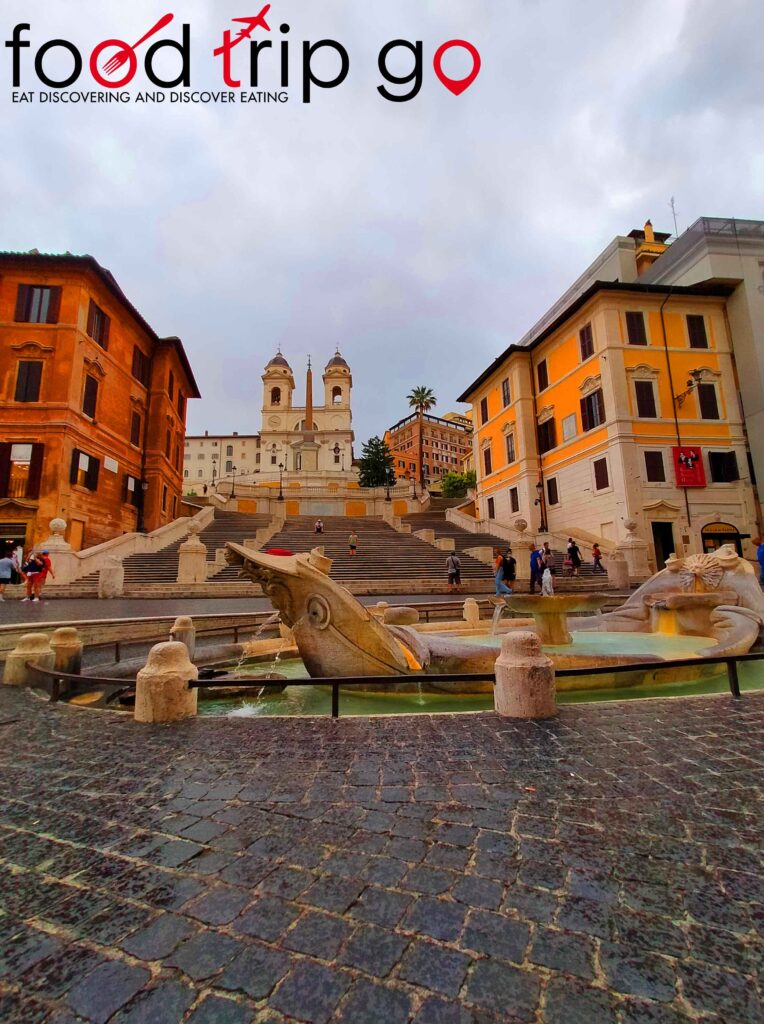
Mount Pincio, Borghese Gallery
From Mount Pincian Hill you have one of the best views of the city of Rome and here arose the first public garden of the City. Galleria Borghese is a unique art museum with some of the most important works by Bernini, Bronzino, Antonio Canova, Caravaggio, Raphael, Perugino and Titian.
Here you can admire stunning works such as Bernini’s Daphne and Apollo. The story goes that Cupid, in order to take revenge on Apollo, shot an arrow of love towards him and an arrow of lead towards Daphne, so that she rejected him. Daphne, to escape Apollo in love, before the god took her, begged her father to turn her into a tree.
Bernini with a marble statue recreates the legend: walking around the statue in a clockwise direction, you can see the transformation of Daphne, from girl to plant. Try it to believe, the effect is stunning!
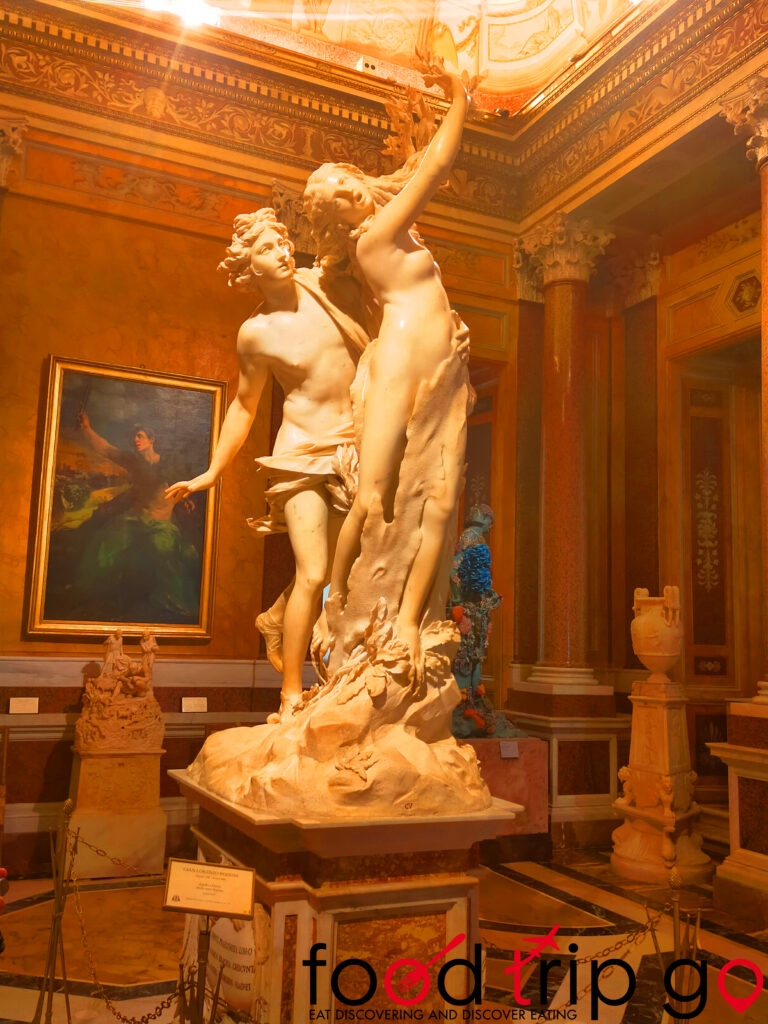
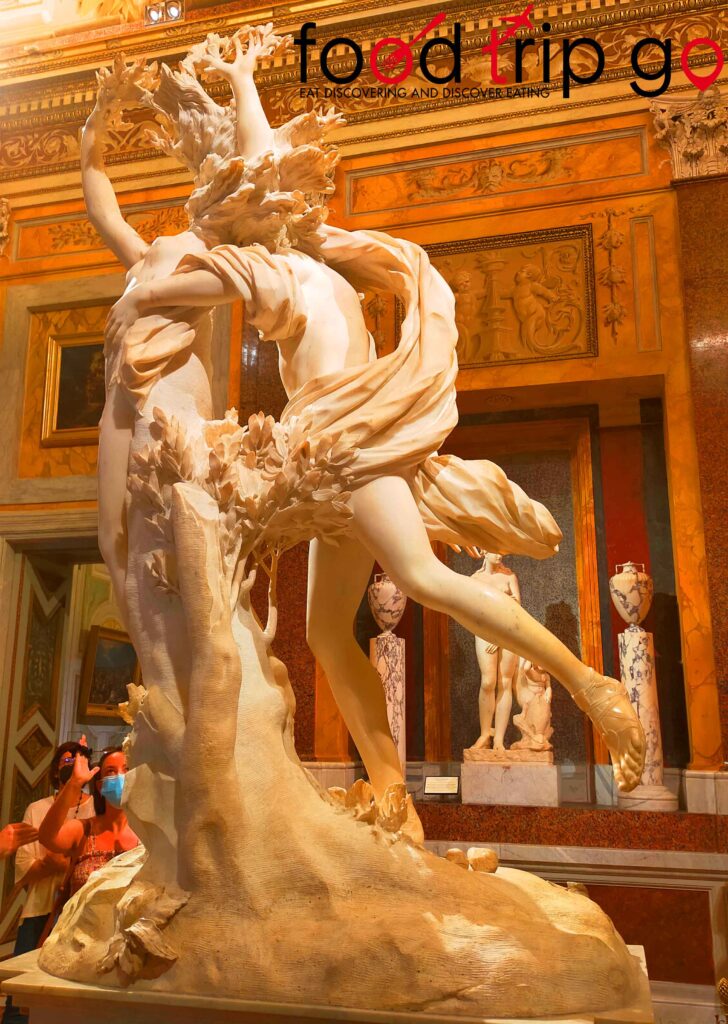
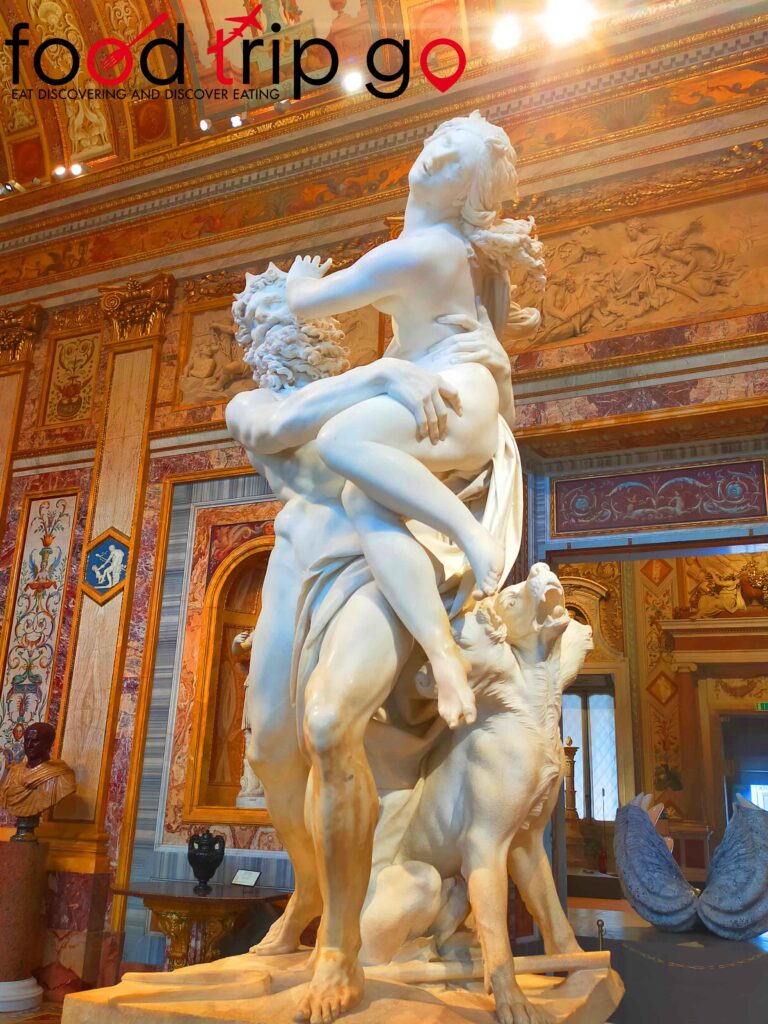
Villa Farnesina and Trastevere
Villa Farnesina is located in Trastevere, a very characteristic area of Roman life, known for its nightlife and typical places to eat and drink well. The Villa has very rich rooms thanks to the works of great artists such as Raphael Sanzio.
Also here you can find another example of the game of perspectives that artists produced in Rome. The Hall of Perspectives was illusionistically painted by Peruzzi as if it were a loggia.
Coppedè District, Villa Torlonia, Mausoleum of Santa Costanza and Catacombs of Priscilla
In another area of Rome, a neighborhood of colorful and with particular shapes houses was built at the beginning of ‘900, the Coppedè District. Not far away is Villa Torlonia, now a public park and home to museums and once the residence of the noble families of Rome. Very particular is the House of the Owls for the shapes of the structure and the colors of its stained glass windows.
The Mausoleum of St. Constance was built in the fourth century AD for Constantina, daughter of Emperor Constantine, who was later venerated as a saint. The structure is circular and rich in mosaics. Not far away are the Catacombs of Priscilla, which date back to the second century AD and were a place of refuge for the first martyrs.
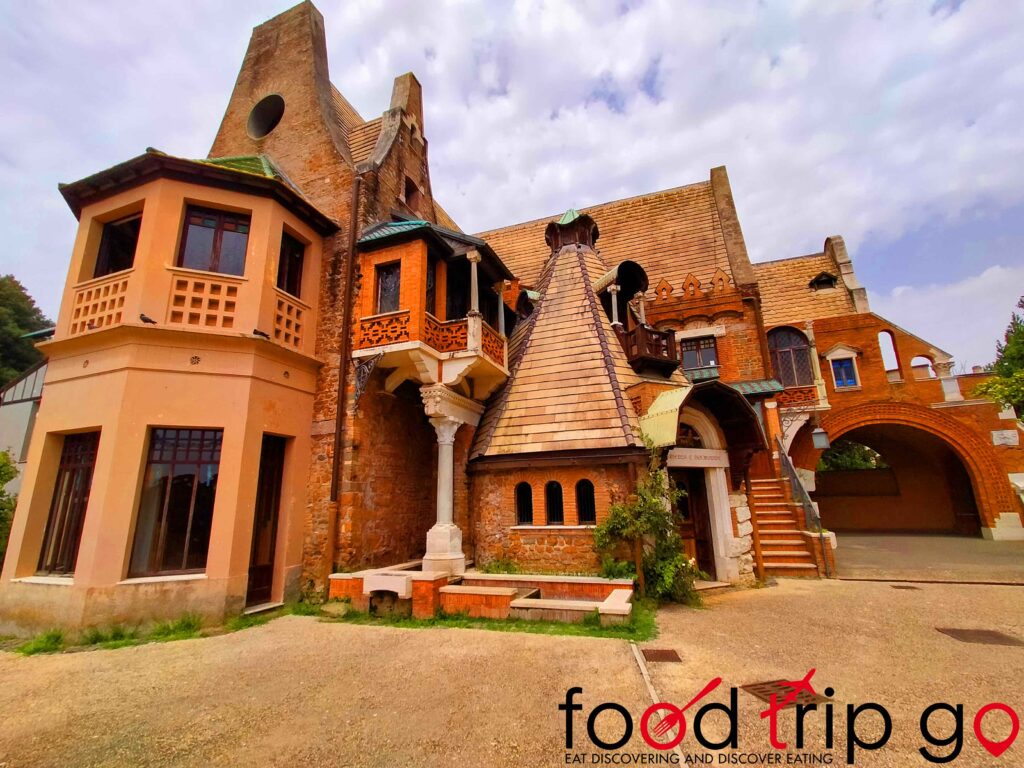
Baths of Caracalla, Papal Basilica St. Paul Outside the Walls, Catacombs of St. Callisto
Outside the center of Rome there are still many places of interest, such as the famous Baths of Caracalla. Do not miss a visit to the Papal Basilica of St. Paul Outside the Walls, the second largest basilica after St. Peter’s in the Vatican.
It stands where, according to history, St. Paul suffered martyrdom. The Catacombs of San Callisto are among the best preserved and are the place where Christians fled from persecution and celebrated their rites.
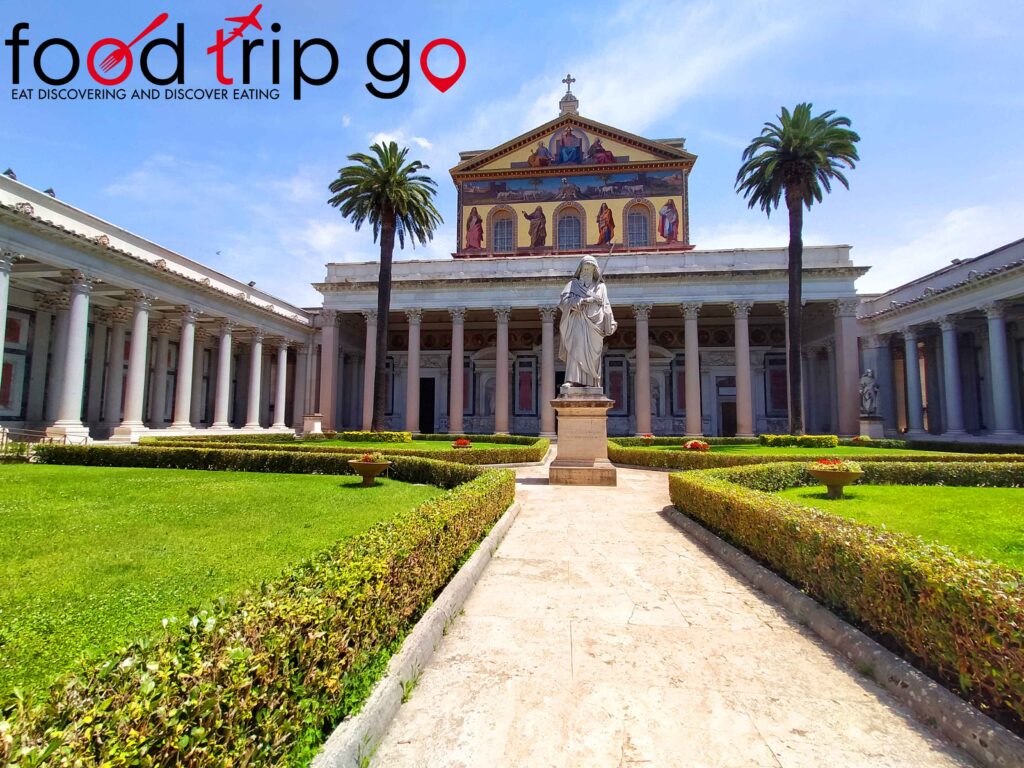
Garbatella, Aqueducts Park, Ostiense District
Outside the center there are typical Roman neighborhoods, such as Garbatella and Ostiense District. At the Park of the Roman Aqueducts it is surprising to think that these buildings were erected 2000 years ago.
Tivoli
In Tivoli, not far from Rome, there are parks and historic villas with fountains not to be missed. Villa Adriana is a very large park where you can visit the remains of the villa of Emperor Hadrian, lover of astronomy.
Rocca Pia is a small well-preserved castle that you meet on the way to Parco Villa Gregoriana. The path downwards goes through the woods, passing through natural caves, to reach a waterfall that is lost in the rocks. Villa d’Este is a Renaissance villa with an extensive garden full of amazing fountains.
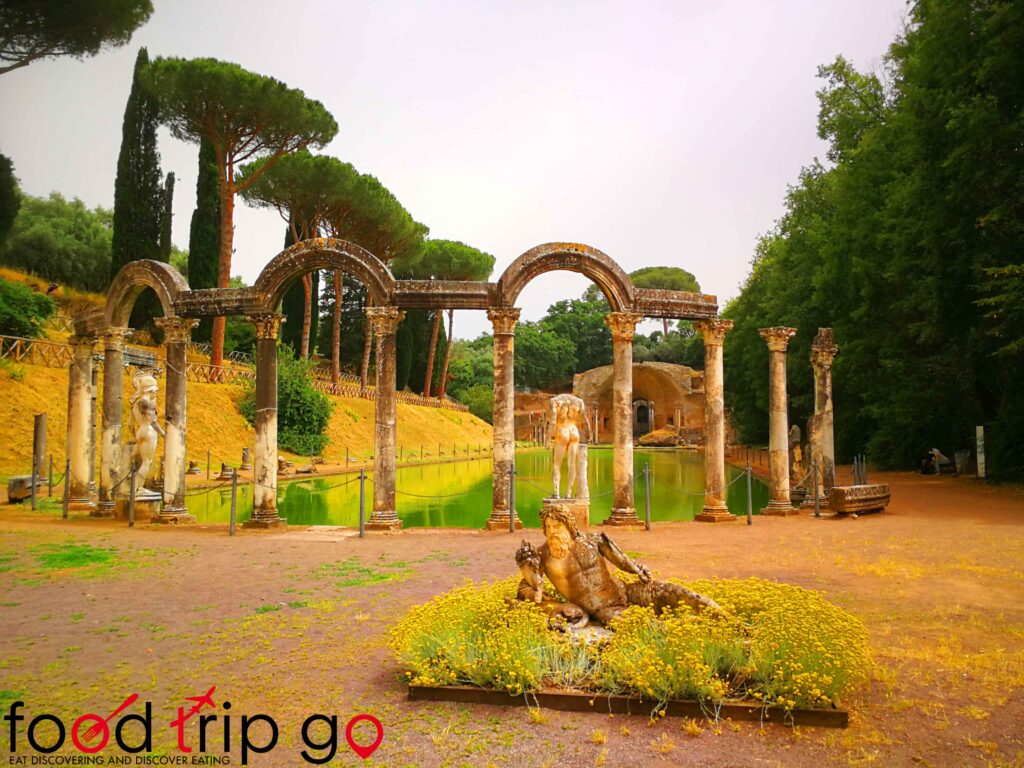
The culinary tradition of Rome, tasty and sincere
Rome is the city that from a historical and artistic point of view has more to offer to the world. But that’s not all. Rome is also the capital of the Country with the greatest gastronomic culture in the world, which is part of the way of life of the Italian people.
Therefore, as always, our tour can only pass by the taste! Among the unmissable dishes of the Roman culinary tradition, it is a must to mention the classic bucatini all’amatriciana that, even if they were not invented in the City, have become a symbol of it. Among the first courses not to be missed are the pasta alla gricia and alla carbonara.
Among the tasty meat dishes, it is worth mentioning the “abbacchio alla scottadito” (grilled lamb), the “saltimbocca alla romana” (Roman style saltimbocca), the meatballs in tomato sauce, the “coda alla vaccinara” (oxtail in tomato sauce) and the chicken with peppers. Everything must be strictly accompanied by the wine of the Castelli. The Castelli Romani are small towns outside Rome, once the holiday resort of Roman nobles, which follow one another on a scenic road of undisputed charm among vast vineyards.
Among them, we can find Ariccia, where the tables are dominated by the porchetta, a dish always appreciated from snack to dinner. On a hot summer evening in Rome, you cannot walk along the river Tiber without stopping to taste the grattachecca, a sort of granita made of crushed ice and syrups of every taste.
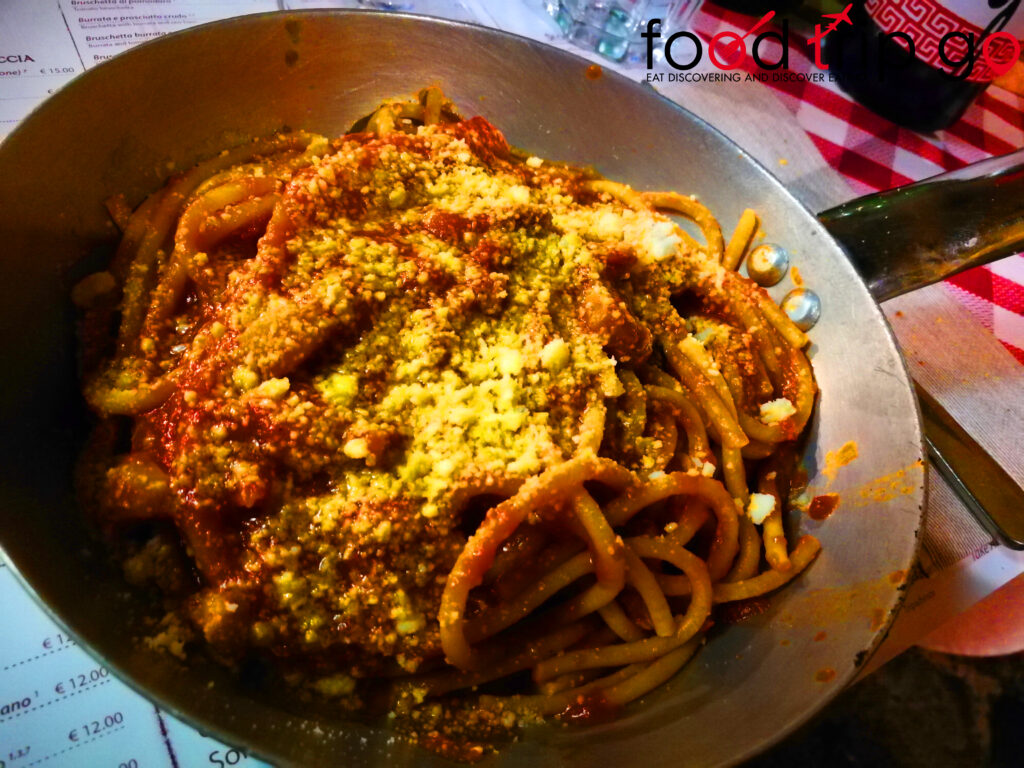

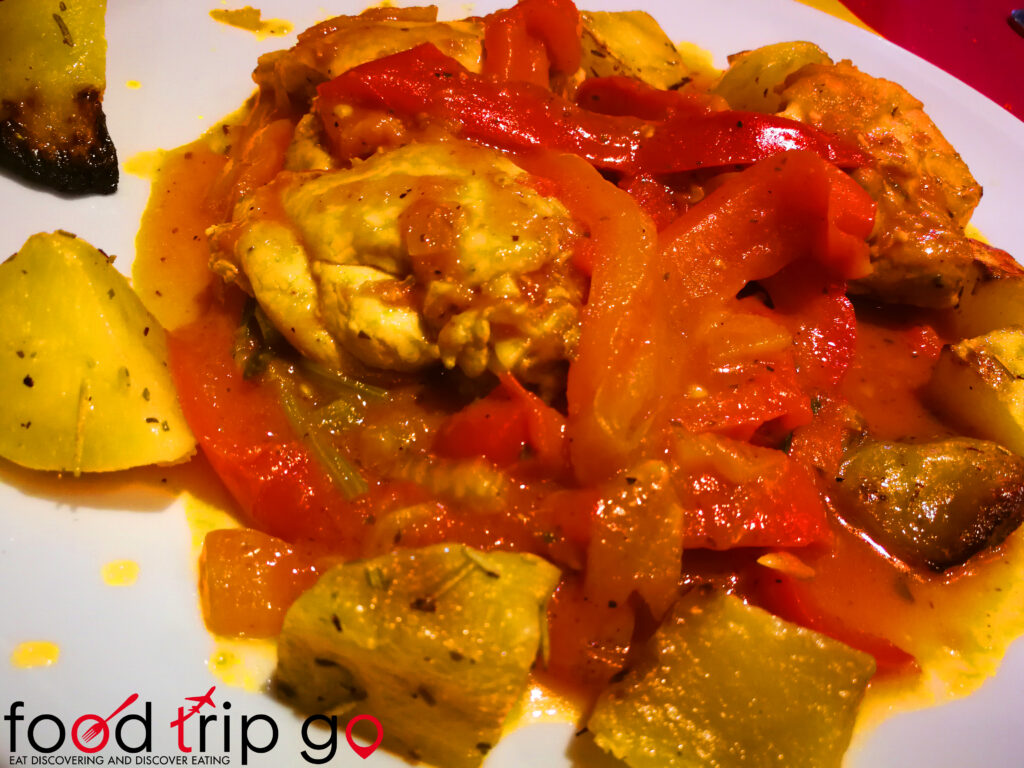
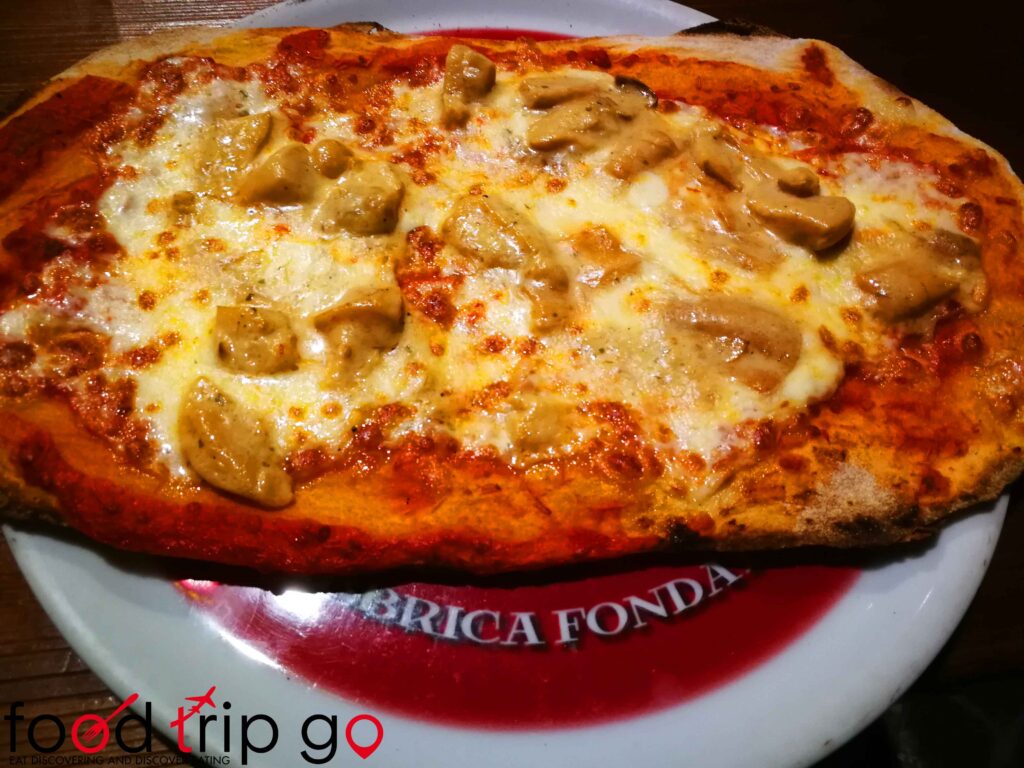
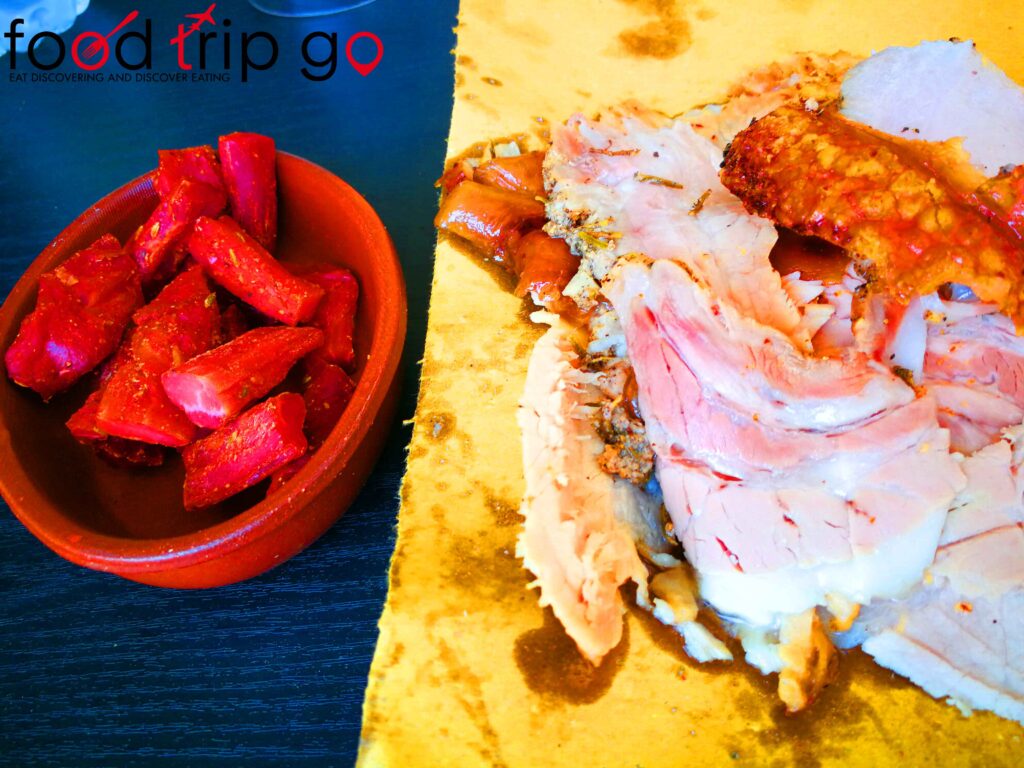
The traditional Roman recipes
Here are some recipes of the culinary tradition of Rome that we recommend:
Rome, the City of good artistic and culinary taste
Rome is a city that has everything to offer: art, history, sociality and good tasty food. Between a visit to a church, a museum, an archaeological site and a walk among the fountains of the historic center, it is nice to stop in a typical restaurant and enjoy the City for all it has to offer. Roman cuisine is just like its City: straightforward and tasty!
Suggested Itinerary Extension
If you visit the city of Rome, you cannot miss a stop in the magnificent Vatican City, the smallest sovereign state in the world, but with the highest concentration of artistic works: